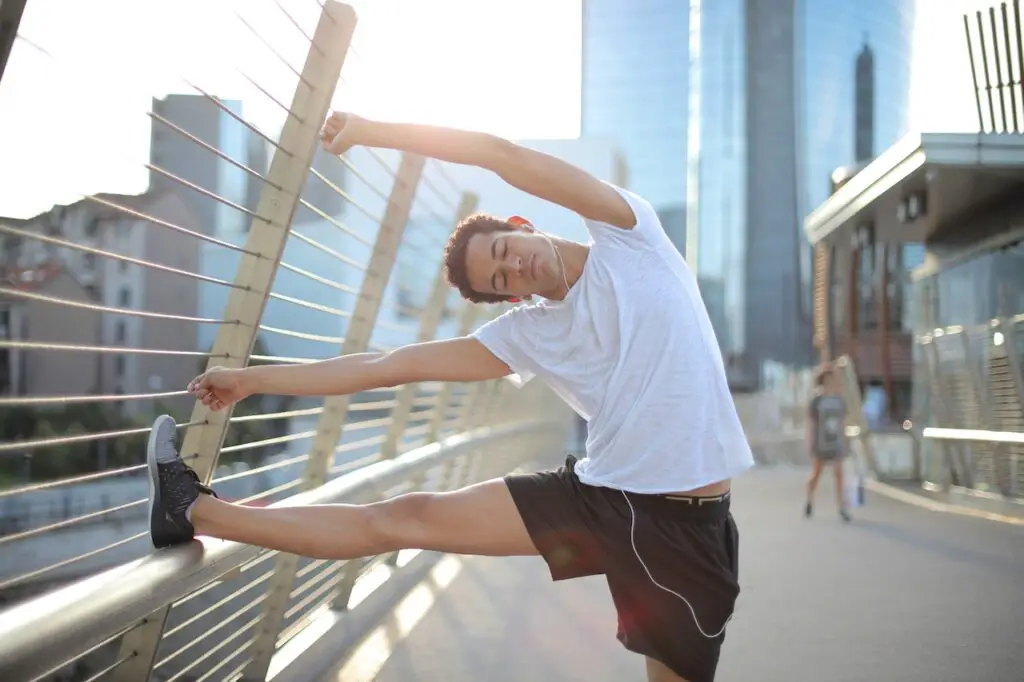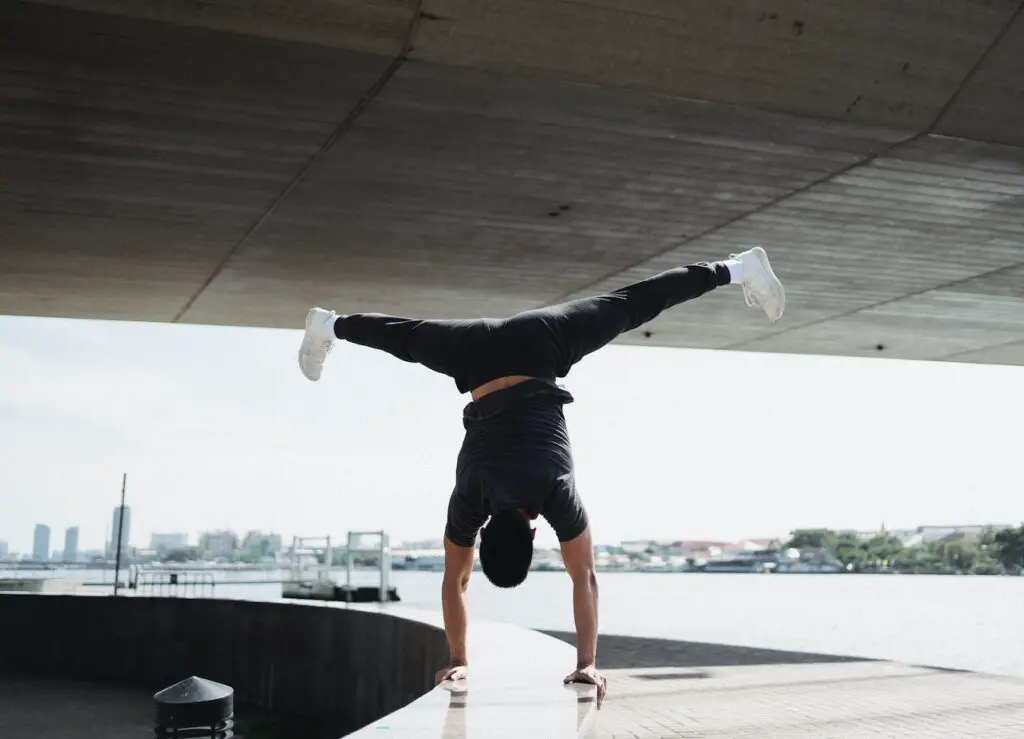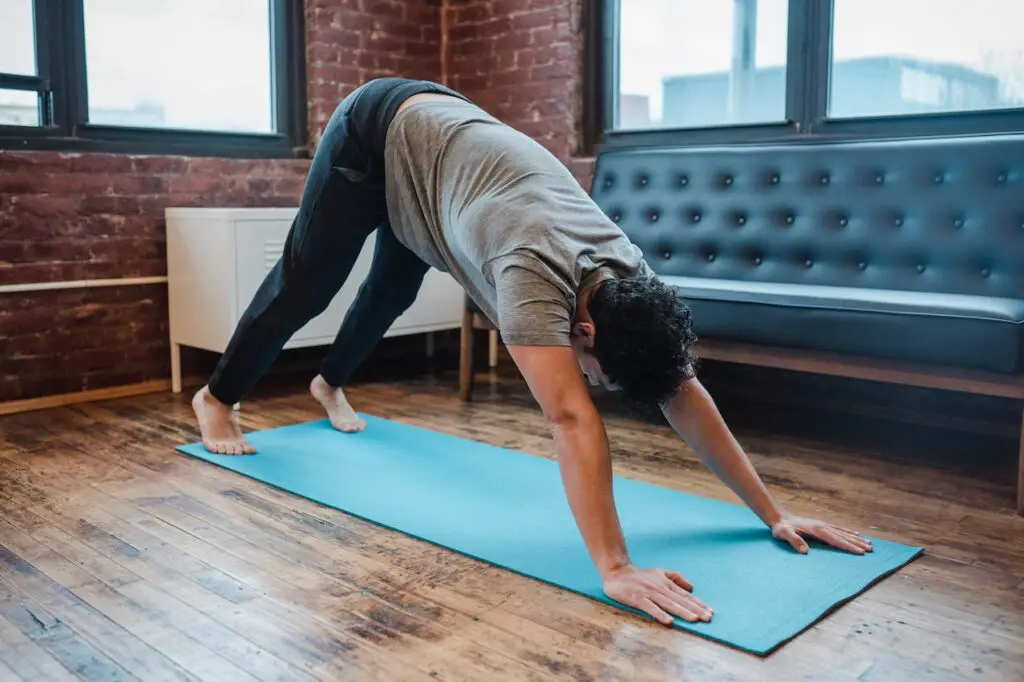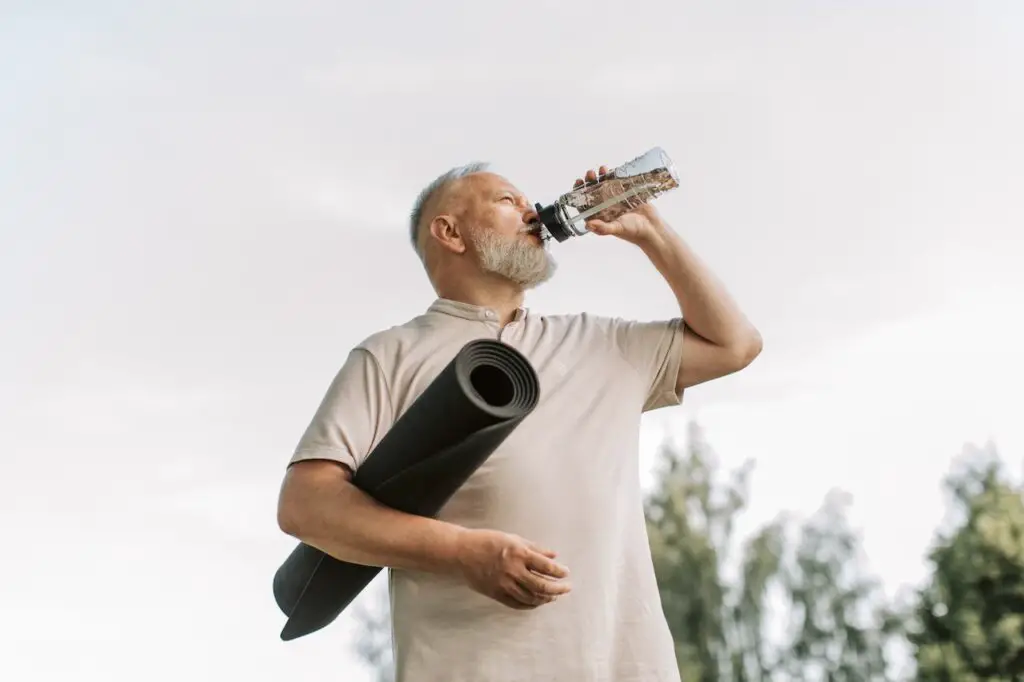As men, improving flexibility might not be a primary focus in our fitness routines. However, neglecting flexibility can lead to decreased mobility, increased risk of injury, and limitations in daily activities. Fortunately, with the right approach, anyone can enhance their flexibility. In this article, we will explore various methods to increase flexibility, including stretching techniques, yoga, Pilates, and more.
Understanding Flexibility
What is Flexibility?
Flexibility refers to the range of motion in your joints and muscles. It is the ability of your body to move freely and comfortably through various movements without experiencing pain or restriction. When you have good flexibility, you can easily bend, stretch, and twist your body without feeling tightness or discomfort.
Flexibility is determined by the elasticity of your muscles, tendons, and ligaments. When these soft tissues have sufficient flexibility, they allow for greater movement and adaptability in your body. This means you can perform daily activities, sports, and exercises with ease and efficiency.
Having good flexibility is important for overall physical health and well-being. It enables you to maintain proper posture, have better coordination and balance, and reduce the risk of injuries. Additionally, flexibility plays a significant role in optimizing athletic performance, as it allows for greater power, speed, and agility in movements.

Related: The Importance of Stretching for Men
Benefits of Flexibility
Improving your flexibility comes with many benefits that go beyond just being able to touch your toes or perform advanced yoga poses. Here are some of the main benefits of increasing your flexibility:
Reduces the risk of injury
When you have good flexibility, your body is better able to absorb impact and avoid strain on your joints and muscles, reducing the risk of injuries.
Improves posture and balance
Good flexibility helps you maintain proper alignment of your spine, hips, and shoulders, leading to better posture and balance.
Increases range of motion
Greater flexibility allows you to move your joints through a greater range of motion, making everyday activities easier and more efficient.
Enhances athletic performance
Better flexibility can improve your speed, agility, and power, making it easier to perform athletic movements.

Related: The Best Strength Training Exercises for Men: A Comprehensive Guide for Beginners
Factors Affecting Flexibility
Age
Age is a significant factor that can influence flexibility. As we age, our bodies naturally undergo changes that can affect our flexibility levels. The gradual loss of elasticity in muscles, tendons, and connective tissues can lead to decreased flexibility over time.
As we get older, it becomes even more important to prioritize flexibility training to maintain and improve our range of motion. Regular stretching exercises and flexibility-focused activities can help counteract the age-related decline in flexibility.
Engaging in flexibility exercises can help slow down the loss of flexibility and promote joint mobility. It can also help reduce the stiffness and tightness often associated with aging. By maintaining and improving flexibility, older individuals can enhance their overall quality of life, remain independent, and continue participating in activities they enjoy.
Genetics
Genetics also contribute to an individual’s natural flexibility. Some people naturally possess greater flexibility due to inherited traits. However, even if you’re not genetically predisposed to being flexible, you can still improve your flexibility through targeted training.
Physical Activity
Physical activity plays a crucial role in maintaining and improving flexibility. Engaging in regular exercise routines that include stretching and flexibility-focused activities is key to enhancing flexibility levels. Here’s how physical activity impacts flexibility:
Promotes joint mobility
Regular physical activity, such as cardiovascular exercises and strength training, helps maintain joint health and range of motion. Moving your joints through their full range regularly prevents stiffness and supports flexibility.
Increases muscle elasticity
Exercise stimulates blood flow to your muscles, improving their elasticity and flexibility. It also promotes the production of collagen, a protein that contributes to the flexibility of tendons and ligaments.
Prevents muscle imbalances
Imbalances between muscle groups can lead to decreased flexibility. Physical activity that targets various muscle groups helps maintain a balanced musculoskeletal system, enhancing overall flexibility.
Supports posture and alignment
Participating in activities like Pilates, yoga, or functional training can improve core strength and body awareness, leading to better posture and alignment. Proper alignment contributes to improved flexibility.

Related: How to Stay Active When You Have a Desk Job
Stretching Techniques
Dynamic Stretching
Dynamic stretching is a form of stretching that involves moving parts of your body through a full range of motion in a controlled manner. Unlike static stretching, where you hold a position, dynamic stretching focuses on continuous movement. Here are the benefits and key points about dynamic stretching:
1. Dynamic stretching increases blood flow to the muscles being used, delivering oxygen and nutrients while removing waste products. This increased circulation helps warm up the muscles, making them more pliable and ready for physical activity.
2. By moving your joints through a full range of motion, dynamic stretching helps lubricate the joint capsules, promoting synovial fluid production. This lubrication improves joint mobility and reduces the risk of joint-related injuries.
3. Dynamic stretching raises muscle temperature through repetitive movements, making the muscles more elastic and less prone to injury. Warmer muscles have improved flexibility and contract more efficiently during physical activity.
Static Stretching
Static stretching involves stretching a muscle to its maximum length and holding the position for a certain period, typically around 20-30 seconds. It is commonly performed after a workout or physical activity when the muscles are warm. Here are some key points and benefits of static stretching:
- Static stretching helps elongate the muscles and tendons, improving their overall flexibility. It allows the muscle fibers to relax and lengthen, promoting a greater range of motion in joints.
- After intense exercise, static stretching helps reduce muscle soreness and stiffness. It promotes blood flow to the muscles, aiding in the removal of waste products and enhancing the delivery of nutrients for faster recovery.
- Holding a static stretch can induce a state of relaxation in the targeted muscle group. This can help relieve muscle tension and promote a sense of overall relaxation and well-being.
- Static stretching can assist in correcting muscular imbalances by targeting specific muscles that may be tighter or shorter than others. By addressing these imbalances, static stretching promotes better posture and alignment.
PNF Stretching
PNF (Proprioceptive Neuromuscular Facilitation) stretching is a technique that combines passive stretching and isometric contractions to improve flexibility. It involves stretching a muscle, contracting it against resistance, and then stretching it further. Here are some key points and benefits of PNF stretching:
- PNF stretching is highly effective in increasing range of motion by targeting both the muscle and its neuromuscular connections. The combination of stretching and contracting signals the nervous system to allow for a greater stretch, resulting in improved flexibility.
- The isometric contractions in PNF stretching activate the muscles, leading to increased strength. This combination of stretching and contracting helps build muscle endurance and stability.
- PNF stretching promotes a relaxation response in the muscles involved. After the isometric contraction, when the muscle is relaxed, it can be stretched further, allowing for a deeper and more effective stretch.
- By increasing flexibility and strength, PNF stretching can help prevent injuries. It improves the elasticity and resilience of muscles, tendons, and ligaments, reducing the risk of strains, sprains, and muscle imbalances.

Related: 10 Health Benefits of Yoga for Men
Incorporating Yoga
Benefits of Yoga
Yoga offers a wide range of benefits for both the body and mind. It is a holistic practice that combines physical postures (asanas), breathing exercises (pranayama), and meditation. Here are some key benefits of practicing yoga:
- Yoga poses involve stretching and strengthening different muscle groups, promoting overall flexibility and strength. Regular yoga practice gradually improves your range of motion and muscle tone.
- Yoga focuses on proper alignment of the body, helping to correct poor posture. It strengthens the core muscles, which support the spine and enhance postural stability.
- Yoga incorporates deep breathing, relaxation techniques, and mindfulness, which can help reduce stress, anxiety, and promote relaxation. It encourages a state of calmness and mental clarity.
- Yoga cultivates body awareness through mindful movements and poses. It improves balance and coordination, helping you feel more grounded and centered.
- Some dynamic styles of yoga, such as Vinyasa or Power Yoga, involve continuous movement and can elevate the heart rate. This can improve cardiovascular health, endurance, and overall fitness.
- Yoga encourages mindfulness by directing your attention to the present moment. Through breath-focused practices and meditation, it enhances concentration, mental clarity, and cognitive function.
- Regular yoga practice has been shown to improve sleep quality and duration. The combination of physical activity, relaxation techniques, and stress reduction contributes to a more restful sleep.
- Yoga’s holistic approach nurtures the mind, body, and spirit connection. It promotes self-care, self-acceptance, and a positive outlook, leading to improved overall well-being.
Yoga Poses for Flexibility
Practicing specific yoga poses can greatly enhance your flexibility. Here are some effective yoga poses that target different areas of the body and promote increased flexibility:
Forward Fold (Uttanasana)
This standing pose stretches the hamstrings, calves, and lower back, promoting flexibility in the posterior chain.
Downward Facing Dog (Adho Mukha Svanasana)
This pose stretches the entire body, including the shoulders, hamstrings, and calves, while also strengthening the arms and legs.
Triangle Pose (Trikonasana)
This standing pose stretches the hips, hamstrings, and side body, promoting flexibility and strength in the lower body.
Pigeon Pose (Eka Pada Rajakapotasana)
This hip-opening pose targets the hip flexors and glutes, helping to increase flexibility in the hips and alleviate tightness.
Cow Face Pose (Gomukhasana)
This seated pose stretches the shoulders, chest, and hips, enhancing flexibility in these areas and improving posture.
Seated Forward Bend (Paschimottanasana)
This seated pose stretches the entire back body, including the hamstrings and spine, promoting flexibility and relaxation.
Pilates for Improved Flexibility
Pilates is a low-impact exercise system that focuses on core strength, flexibility, and body control. It incorporates precise movements and emphasizes proper alignment and breathing. Pilates exercises help lengthen and stretch muscles, particularly in the abdomen, back, and hips, leading to improved flexibility and posture.
Other Exercise Methods
Aside from yoga and Pilates, there are various exercise methods that can enhance flexibility. Activities such as swimming, dancing, and martial arts involve dynamic movements that promote joint mobility and flexibility. Adding these activities to your fitness routine can provide a fun and effective way to increase your flexibility.

Related: Healthy Eating for Men: A Beginner’s Guide to Balanced Nutrition
Nutrition and Hydration
When it comes to enhancing flexibility, paying attention to your nutrition and hydration is crucial. Here’s how you can optimize your diet and hydration for improved flexibility:
Maintaining Adequate Hydration
Proper hydration is essential for optimal muscle function and flexibility. Ensure you drink enough water throughout the day to keep your body hydrated. Dehydration can lead to muscle cramps and stiffness, hindering your flexibility progress. Aim to consume at least 8 glasses of water daily, and increase your intake during intense physical activities or in hot weather.
Embrace a Balanced Diet
Eating a well-rounded, balanced diet provides the necessary nutrients for your muscles and connective tissues. Include a variety of fruits, vegetables, whole grains, lean proteins, and healthy fats in your meals. These foods contain essential vitamins, minerals, and antioxidants that support muscle health and flexibility.
Prioritize Nutrient-Rich Foods
Certain nutrients are particularly beneficial for promoting flexibility. Include foods rich in vitamin C, such as citrus fruits, berries, and leafy greens, as it aids in collagen production, supporting the elasticity of tendons and ligaments. Additionally, consuming omega-3 fatty acids found in fatty fish, chia seeds, and walnuts can help reduce inflammation, supporting joint mobility.
Ensure Sufficient Protein Intake
Protein is essential for muscle growth, repair, and flexibility. Include lean sources of protein, such as chicken, fish, tofu, beans, and lentils, in your meals. Protein provides the building blocks necessary for maintaining and building muscle mass, which contributes to overall flexibility.
Limit Processed Foods and Added Sugars
Processed foods and added sugars can contribute to inflammation and stiffness in the body. Minimize your intake of processed snacks, sugary drinks, and desserts. Instead, focus on whole, unprocessed foods that nourish your body and support flexibility.
Moderate Caffeine and Alcohol Consumption
While enjoying your favorite caffeinated beverages or alcoholic drinks in moderation is acceptable, excessive consumption can negatively impact flexibility. Caffeine can lead to muscle tension, while alcohol can dehydrate the body. Be mindful of your intake and balance it with adequate hydration.
Consistency is Key
To achieve significant improvements in flexibility, consistency is crucial. Make stretching and flexibility exercises a regular part of your fitness routine. Aim for at least three to five sessions per week, dedicating 10-15 minutes to each session. Consistency over time will yield noticeable results.
Avoiding Common Mistakes
When working on increasing flexibility, it’s essential to avoid common mistakes that can hinder progress or lead to injury. Avoid bouncing or jerking movements during stretching, as they can strain muscles. Instead, focus on smooth and controlled motions. Additionally, listen to your body and avoid pushing past your limits, as this can cause injury. Gradual progress is key to preventing setbacks.
Tracking Progress
Tracking your flexibility progress can be motivating and help you identify areas that require additional attention. Take measurements or photographs periodically to observe changes in your range of motion. Celebrate small milestones along the way, as progress may not always be immediately apparent.
Seeking Professional Guidance
If you’re unsure about the best methods to increase your flexibility or have specific limitations or injuries, seeking professional guidance is recommended. A qualified fitness trainer, physical therapist, or yoga instructor can provide personalized advice and create a tailored flexibility program to meet your needs and ensure safe and effective progress.
Conclusion
Improving flexibility as a man is essential for maintaining overall health, enhancing physical performance, and preventing injuries. By incorporating stretching techniques like dynamic, static, and PNF stretching, along with practices such as yoga and Pilates, you can increase your flexibility and enjoy the numerous benefits that come with it. Remember to stay consistent, listen to your body, and seek professional guidance when needed. Start your journey toward improved flexibility today and experience the positive impact it can have on your daily life.
FAQs
How long does it take to see noticeable improvements in flexibility?
The timeline for noticeable improvements in flexibility varies from person to person. With regular stretching and consistent practice, you can generally expect to see improvements within a few weeks to a few months.
Can I increase my flexibility at any age?
Yes, you can improve your flexibility at any age. While it may take longer for older individuals to see improvements, it’s never too late to start working on increasing flexibility.
Can I overstretch and cause injury?
Yes, overstretching can lead to injury, particularly if you push past your limits or perform movements incorrectly. It’s essential to listen to your body and avoid pushing too hard or too fast.
Is it necessary to warm up before stretching?
Yes, warming up before stretching is crucial to prevent injury and improve flexibility. A few minutes of light cardio or dynamic stretching can help prepare your muscles for stretching.
Can I combine different methods to increase flexibility?
Yes, combining different methods such as yoga, Pilates, and other exercises can enhance your flexibility and provide variety in your fitness routine. However, it’s essential to maintain proper form and avoid overdoing it to prevent injury.

